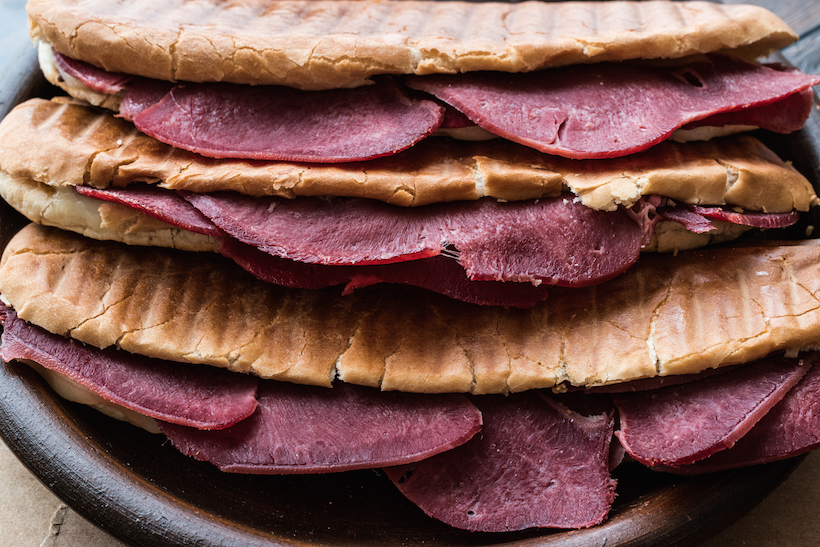Calling all adventurous eaters! Today’s food history lesson centers on a dish that’s quite tongue in cheek. That’s right – lengua!
Though the thought of eating tongue may be terrifying to some, those who have given it a go know just how much flavor it brings to ordinary Latin dishes. Ahead, learn more about lengua’s history, preparation, and nutritional value.
A Historical Dish
Early archaeological findings show that our ancient ancestors have been enjoying lengua since the beginning of time. Numerous recorded images show evidence that tongue was the “favored” organ meat amongst hunters and gathers. According to The Heart of Everything That Is, hunters often considered the body of animals to be useless, and instead reached for the tongue as their main source of food.
Read more on page 2 >>> [pagebreak]
A Nutritious Ingredient
Tongue isn’t just a good option for those looking to spice up their dinner plates. Research shows that it offers many advantages and nutrients, too. Most notably, a 3 oz. serving of tongue comes loaded with nearly 17g of protein, keeping your stomach full and your muscles strong until your next meal. Second up, a plate of tongue will give you high amounts of iron and zinc, boosting your immune system and keeping your energy high. If that wasn’t enough, the dish provides choline and B-12, which both aid in nervous system development.
A Diverse Meal
Yet another reason you should give lengua a try: There are numerous ways to prepare it, each offering a whole slew of dishes to enjoy it in. Try it in a slow cooker, such as in this Beef Tongue Taco recipe, gently boil it on the stovetop, or sear it in a frying pan.
A Dinner Staple
The protein is hugely popular in Latin American countries – from Puerto Rican lengua al caldero to lengua rellena – but the dish has also made its way around the world. Consider Filipino lengua with white sauce, Japanese grilled tongue, or Bulgaria’s take on “tongue with butter.”


![Making Mealtime Matter with La Familia: Easy Sofrito [Video]](https://thelatinkitchen.com/wp-content/uploads/2015/10/sofrito-shutterstock__0-500x383.jpg)
![Easy Latin Smoothies: Goji Berry Smoothie [Video]](https://thelatinkitchen.com/wp-content/uploads/2015/12/goji_berry-shutterstock_-500x383.jpg)
















![Fun and Fast Recipes: Fiesta Cabbage Salad [Video]](https://thelatinkitchen.com/wp-content/uploads/2015/11/fiesta_cabbage_slaw-shutterstock_-500x383.jpg)









